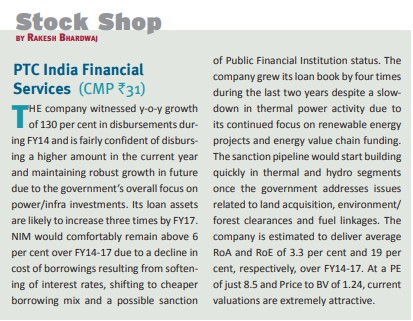THE market has hit a new high, riding on improved fundamentals of the economy and improving geopolitical environment. India is far less fragile now than was perceived a year back with declining current account deficit and improving foreign exchange reserves coupled with a stable rupee. Short-term external debt as percentage of reserves has declined considerably and fiscal pressure in terms of twin deficits—current as well as fiscal deficit—has vastly reduced with consumer price inflation cooling down and the Reserve Bank may think of a rate cut sooner than most market participants expect. Imports and exports both have picked up, indicating an economic recovery confirmed by industrial production rising to a 19-month high of 4.7 per cent and services activity rising to a 17-month high. Declining crude oil prices due to receding tension and better-than-expected Chinese data has further aided sentiment.
The market has just entered the second phase of a three-phase bull run. The first phase was led by hope of a good election outcome and decisive reforms-oriented policy direction by the new government. The second phase starts with policy pronouncements leading to improved sentiment, gradually turning into better growth numbers and earnings expansion. This phase is likely to see a prolonged run followed by the third phase that will start with execution of the promised policies and results of the same becoming visible. The bull market, therefore, is likely to last for some time, aided by comfortable liquidity. The market has decisively changed its course from ‘sell on rise’ to ‘buy on declines’. The budget was indicative of the direction that the economy needs to be given by emphasising core issues of fiscal consolidation, infrastructure, manufacturing, agriculture and creating an enabling environment for business growth.

Corporate earnings for Q1 have by and large been better than expected. The market is trading at around 15 times earnings and has the potential to reach its historical average of 17 times. Corporate earnings are expected to significantly improve from Q4 onwards. The monsoon, that was looking quite deficient, has of late recovered, giving the much-needed respite. The market is currently in consolidation mode and may be waiting for further triggers in the form of fresh policy actions. Though the negatives are limited, there may be some downside due to global macroeconomic issues if the Fed starts an earlier than anticipated normalisation of US monetary policy. The Fed has also raised concerns about frothy valuations in some of the sectors to substantiate its view.
Investors can use steep corrections, if at all they happen, to enter the market or else follow a systematic approach to take increased exposure especially in the sectors that are likely to benefit due to the policy focus of the government. The current consolidation phase can be used to identify potential winners in the next phase of this bull run.
The author has no exposure in the stock recommended in this column. gfiles does not accept responsibility for investment decisions by readers of this column. Investment-related queries may be sent to editor@gfilesindia.com with Bhardwaj’s name in the subject line.





























































